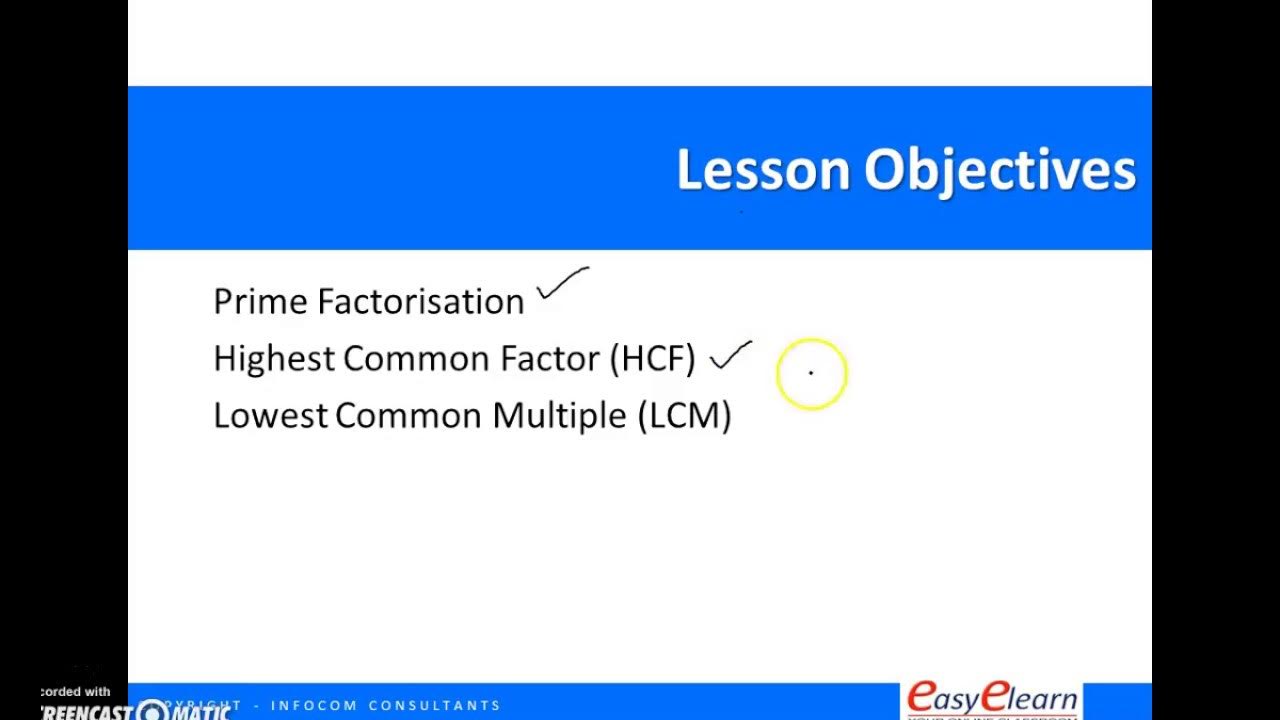BAB 3 Menentukan Faktor Positif | Matematika Dasar | Alternatifa
Summary
TLDRThe video script discusses the concept of positive factors in mathematics, particularly in relation to prime factorization. It explains how to determine the positive factors of a number, using 24 as an example to illustrate prime factorization. The script then explores the pattern and method to calculate the total number of positive factors for any given number, simplifying the process without the need for exhaustive listing. It further applies this method to numbers like 80 and 120, demonstrating how to quickly find their positive factors, thus providing a valuable insight into mathematical problem-solving.
Takeaways
- 🧮 The script discusses the concept of determining positive factors, particularly in the context of mathematical simulations.
- 📚 Positive factors are numbers that can divide a given number without leaving a remainder, and they are typically discussed in the context of prime factorization.
- 🔢 The example of the number 24 is used to explain prime factorization, which is 2^3 * 3, and it's noted that 24 can be divided by many numbers, not just primes.
- 🌟 The script highlights the importance of understanding the difference between prime factors and positive factors, with the latter including all integers that can divide the number completely.
- 📈 The presenter introduces a method to calculate the number of positive factors of a number by using the formula (a+1)(b+1) for a number expressed as 2^a * 3^b.
- 🔍 The script provides a step-by-step approach to finding the positive factors of a number, emphasizing the pattern and method rather than memorization.
- 💡 A key insight is that the pattern for determining the number of positive factors involves adding 1 to the exponents in the prime factorization and then multiplying these numbers together.
- 📊 The script uses the number 80 as another example to demonstrate the method, showing that there are 10 positive factors for 80, which aligns with the calculated pattern.
- 🔢 The presenter also explains how to apply this method to larger numbers, like 394, by first finding the prime factorization and then applying the pattern to determine the number of positive factors.
- 🎓 The script concludes with a summary that there is a hidden pattern in positive factors that can be used to quickly determine the number of factors without extensive calculation.
Q & A
What is the main topic discussed in the transcript?
-The main topic discussed in the transcript is determining the positive factors of a number, with a focus on prime factorization and how it relates to finding all the positive factors of a given number.
What is the difference between a prime factor and a positive factor?
-A prime factor is a prime number that divides a given number without leaving a remainder, while a positive factor is any positive integer that can divide the given number completely.
How is prime factorization used to find the positive factors of a number?
-Prime factorization breaks down a number into its prime components. The positive factors can then be determined by considering all combinations of these prime factors raised to their respective powers, including zero.
Can you provide an example of how to find the positive factors of the number 24 using the information in the transcript?
-The prime factorization of 24 is 2^3 × 3. The positive factors are found by considering all combinations of 2^a and 3^b where a can be 0, 1, 2, or 3, and b can be 0 or 1, resulting in 8 positive factors.
What is the significance of the number 8 in the context of the number 24's positive factors?
-The number 8 signifies the total count of positive factors for the number 24, which is derived from the combination of powers of its prime factors (2 and 3).
How does the transcript suggest simplifying the process of finding positive factors for larger numbers?
-The transcript suggests using a pattern where the powers in the prime factorization are incremented by one and then multiplied together to find the total number of positive factors without having to list them all.
What is the method to determine the number of positive factors for a number with a prime factorization of 2^a × 3^b?
-To determine the number of positive factors, add 1 to each of the exponents a and b, and then multiply the results together.
Can the method discussed in the transcript be applied to any number to find its positive factors?
-Yes, the method can be applied to any number by first determining its prime factorization and then using the pattern described to calculate the number of positive factors.
What is the prime factorization of the number 80 as mentioned in the transcript?
-The prime factorization of 80 is 2^4 × 5^1, which means 80 is composed of the prime numbers 2 and 5, with 2 raised to the power of 4 and 5 to the power of 1.
How many positive factors does the number 80 have according to the transcript?
-The number 80 has 10 positive factors, which is calculated by adding 1 to each of the exponents in its prime factorization (4+1 for the power of 2 and 1+1 for the power of 5) and then multiplying these numbers together (5 * 2 = 10).
Outlines

Dieser Bereich ist nur für Premium-Benutzer verfügbar. Bitte führen Sie ein Upgrade durch, um auf diesen Abschnitt zuzugreifen.
Upgrade durchführenMindmap

Dieser Bereich ist nur für Premium-Benutzer verfügbar. Bitte führen Sie ein Upgrade durch, um auf diesen Abschnitt zuzugreifen.
Upgrade durchführenKeywords

Dieser Bereich ist nur für Premium-Benutzer verfügbar. Bitte führen Sie ein Upgrade durch, um auf diesen Abschnitt zuzugreifen.
Upgrade durchführenHighlights

Dieser Bereich ist nur für Premium-Benutzer verfügbar. Bitte führen Sie ein Upgrade durch, um auf diesen Abschnitt zuzugreifen.
Upgrade durchführenTranscripts

Dieser Bereich ist nur für Premium-Benutzer verfügbar. Bitte führen Sie ein Upgrade durch, um auf diesen Abschnitt zuzugreifen.
Upgrade durchführenWeitere ähnliche Videos ansehen

EKSPONEN 1 KELAS X DEFINISI BILANGAN PANGKAT | BUKU PKS MATEMATIKA SMA KELAS X KURIKULUM MERDEKA

Math Antics - Prime Factorization

EasyElearn - Maths Tuition Singapore - Secondary 1 - HCF and LCM

Factoring Polynomials using Greatest Common Monomial Factor

NÚMEROS QUADRADOS PERFEITOS - 8º ANO

How to Find the LCM using Prime Factorization | Least Common Multiple | Math with Mr. J
5.0 / 5 (0 votes)
